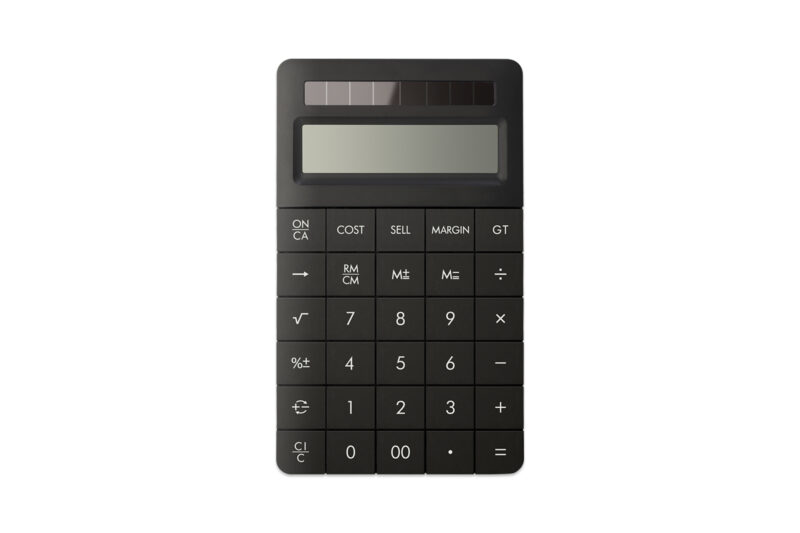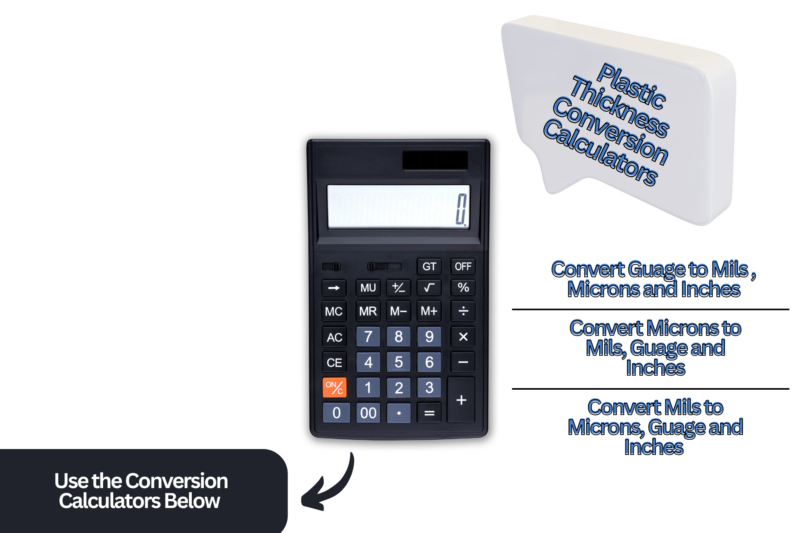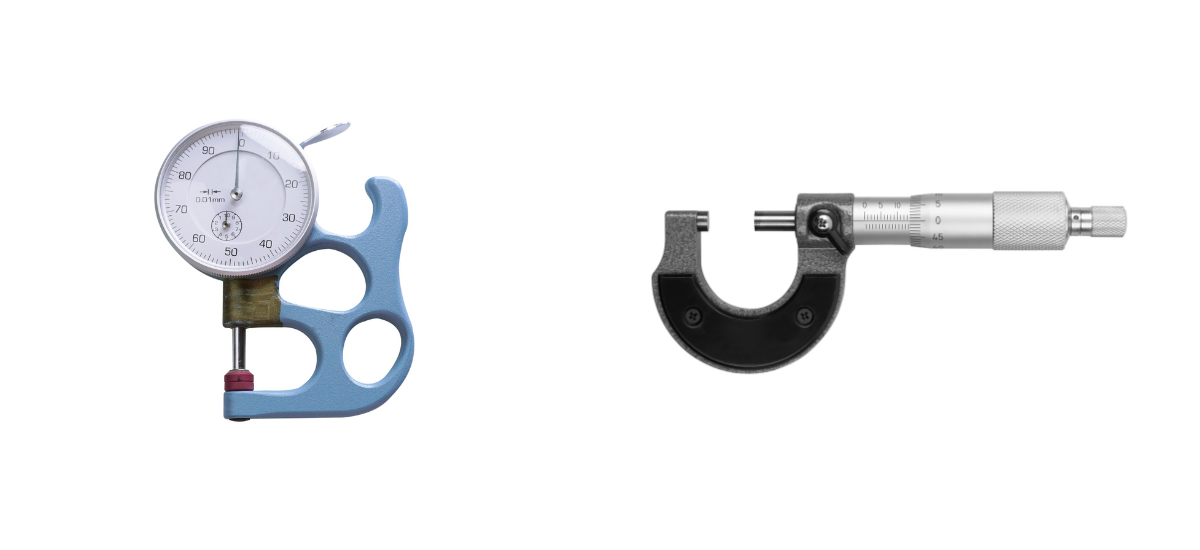How to Measure and Convert Plastic Film Thickness
In the polythene packaging industry, finding the best way to measure and convert your plastic film measurements into the appropriate metric units can be a challenging task. However, plastic film thickness is commonly denoted in gauge, millimetres, and microns. Navigating between these units can be challenging, but with our online conversion calculators, this task can be simplified.
The conversion calculators below are designed to streamline your workflow and enhance the precision of your polythene packaging thickness measurements, so feel free to use them.

Plastic Thickness Conversion Calculators


Gauge to microns to millimeters and inches conversion calculator
How to Use this Conversion Calculator:
To get your conversion results, simply enter the thickness of your film in gauge into the textbox provided. Once entered, you can either press the 'Enter' key on your keyboard or click the black 'Convert' button. Your converted values in microns, millimeters, and inches will then be displayed below.
Microns:
Millimeters:
Inches:
Micron to Millimeters, Gauge, and Inches Conversion Calculator
How to Use this Conversion Calculator:
Enter the thickness of your film in microns into the textbox below. After entering the value, either press the 'Enter' key on your keyboard or click the black 'Convert' button. The converted values in millimeters, gauge, and inches will be displayed immediately below.
Millimeters:
Gauge:
Inches:
Millimeters to Microns, Gauge, and Inches Conversion Calculator
How to Use this Conversion Calculator:
Enter the thickness of your film in millimeters into the textbox below. After entering the value, either press the 'Enter' key on your keyboard or click the black 'Convert' button. The converted values in microns, gauge, and inches will be displayed immediately below.
Microns:
Gauge:
Inches:
How to Measure Plastic Film Thickness
A thickness gauge or micrometre is typically used to measure the thickness of plastic film, as a ruler is not precise enough for such fine measurements.

Below, we've embedded a very helpful video from 'Can U Show Me How' that demonstrates the process of measuring plastic film. Whether you're a visual learner or just seeking some additional clarity, this beneficial tutorial will walk you through each step, ensuring you measure your plastic film accurately.
What are Microns (mu), Gauge and Millimetres?
The thickness of thin sheet material such as plastic sheets needs to be known as it will influence properties such as the sheet stiffness – i.e. how easily the sheet can flex.
Sheet thickness is often stated by the manufacturer or it can be measured using a micrometre, given that conventional rulers are not capable of capturing such small measurements.
In the UK's metric system, the millimetre (mm) is the preferred unit for such measurements. For instance, a sheet's thickness might be denoted as 1 mm. For measurements that fall below 1 mm, it's standard practice to further divide the millimetre into 1000 parts, known as microns. To put it into perspective, 0.5 mm is equivalent to 500 microns.
Conversely, the term 'mil' is used in the USA, representing 1/1000 of an inch. This is analogous to the old UK imperial unit known as 'Thou'. In the US, the plural is expressed as 'mills'. This nomenclature can be a source of confusion for those familiar with the metric system. When spoken, "mil" or "mils" can be mistaken for the casual reference to millimetres, even though it's consistently written as 'mm'.
Now, introducing the concept of 'gauge': it's another method used to denote thickness, in plastics. The gauge number inversely correlates with the material's thickness; a higher gauge number indicates a thinner material. It's crucial to note that the gauge system can vary based on the material in question, so always ensure you're referencing the correct gauge chart for the material at hand.
How to Convert Gauge to Microns
The gauge of polythene can be converted from gauge to microns by dividing the gauge value by 3.937. You can do this with ease using our calculators towards the bottom of this page.
For example:
200 gauge ÷ 3.937 = 50.80mu
20 gauge ÷ 3.937 = 5.08mu
How to Convert Microns to Millimetres
The millimetres of polythene can be converted from microns to millimetres by dividing the micron value by 1000. You can do this with ease using our calculators below.
For example:
200 Microns ÷ 1,000 = 0.200mm
150 Microns ÷ 1,000 = 0.1500mm